In his fourth solo exhibition at O’Born Contemporary, Alex Fischer continues to explore themes of appropriation, multiples and the relationships between digital imagery produced on tangible materiality. Titled 1, 7, and 6000, the exhibition demonstrates differences between multiple editions, and the singularity of one original piece.
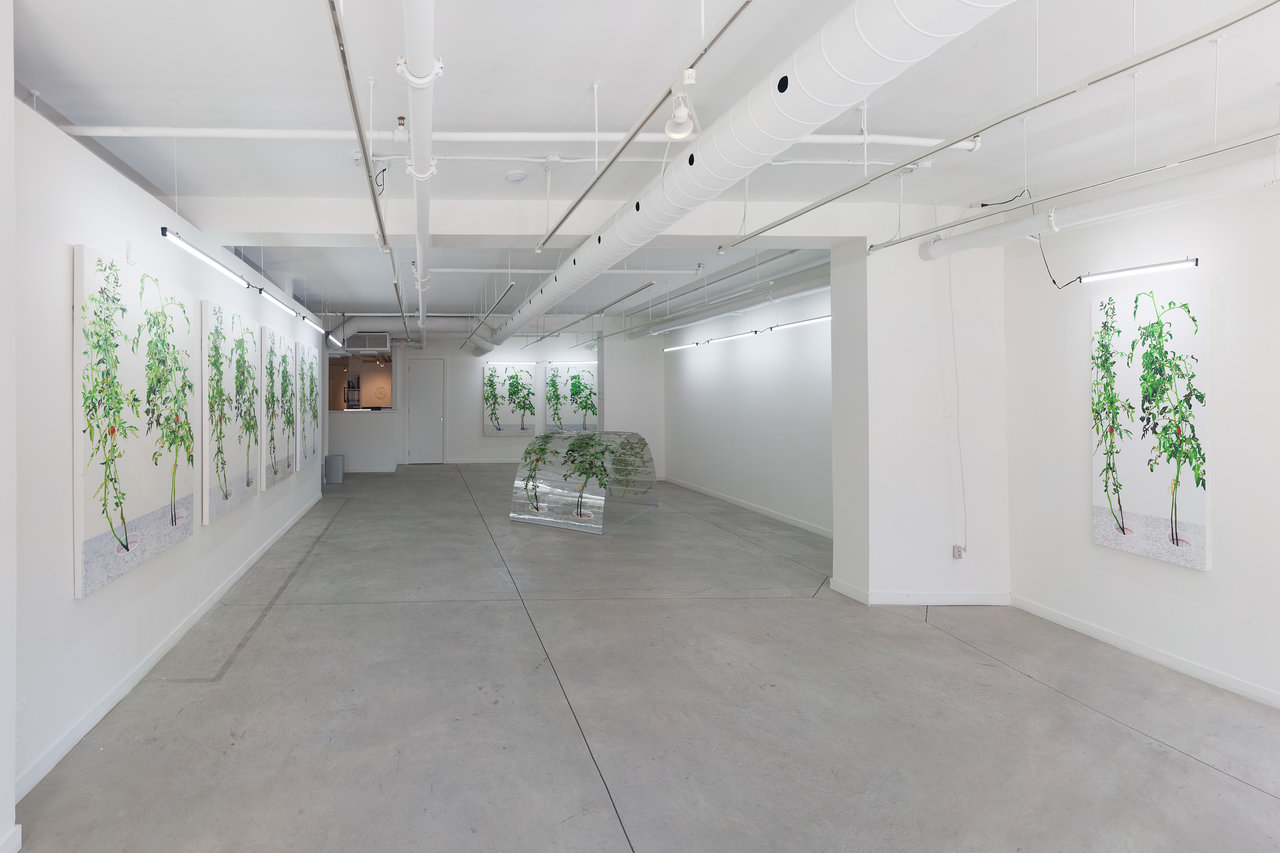 Installation view. Courtesy of O’Born Contemporary
Installation view. Courtesy of O’Born Contemporary
Snow rests on the ground outdoors, while the gallery is transformed into a minimal simulation of a greenhouse. Warm fluorescent lighting line the high walls in a thin que, with a 48 x 60 inch digital print on matte paper, and seven 48 x 60 inch oil paintings on cotton canvas of identical tomato plants mounted underneath them. The print and paintings are nearly indistinguishable from one another, and all bear the same title, “VII”. The form, composition, placement, and base of the tomato plants are all the same. However, the brushstrokes, colours, and shades in each piece vary. To figure out which piece is a digital print, is like finishing a challenging game of Where’s Waldo. Every piece looks the same, until you look just hard enough to see the materiality of the surface.
 Alex Fischer, VII, 2015. Courtesy of O’Born Contemporary
Alex Fischer, VII, 2015. Courtesy of O’Born Contemporary
The digital print was made by Alex Fischer, meanwhile the seven oil paintings were painted by seven painters from Xiamen, China. Fischer is credited as the artist, while the paintings are named after the original painter in brackets. A correlation is made between digital reproductions, and outsourced labour, from the perspective of a capitalist culture of excessive consumption. The body with the design and concept is the artist, while the body that executes the visual representation of the idea is the tool.
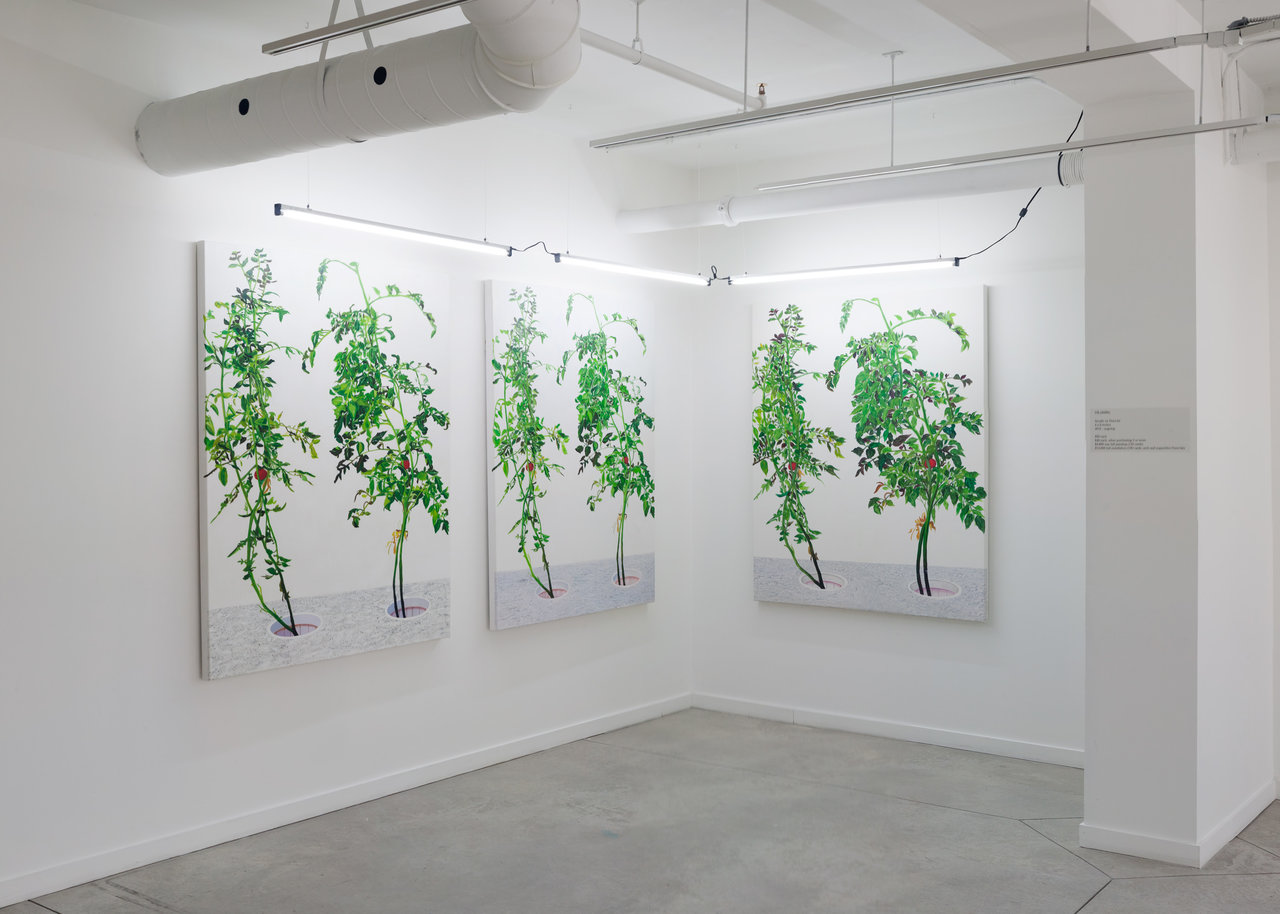 VII (Ye An 叶安), 2015; VII (Feng Shui Gui 冯声贵), 2015; VII (Chen Shan 陈山), 2015. Courtesy of O’Born Contemporary
VII (Ye An 叶安), 2015; VII (Feng Shui Gui 冯声贵), 2015; VII (Chen Shan 陈山), 2015. Courtesy of O’Born Contemporary
In the middle, a translucent structure – directly mimicking the clear arched walls, and multiple panel windows of a greenhouse – sits on the floor. Measuring 82 x 48 x 40 inches, the acrylic and aluminum arch bears multiple shelves of small acrylic paintings on dura-lar. It is the same tomato plant, broken into a grid. Titled “VII (6000)”, it holds 6000 sheets of dura-lar, with only the surface painted. It is the tilework of the original parent piece, while the rest of the sheets of dura-lar wait to be painted on for demand. Next to the structure, a handout is found, with an image of the painting divided into a grid. Instructing the buyer to place an X over the rectangle of which part of the image they desire. This reflects on the nature of artist multiple, and how value is placed on something that is a continuing series. Fischer plans on continuing producing copies on demand, coinciding with his future projects. The value is placed on the duration and social engagement of the project, rather than commodity. Each piece of the parent image, is equally as real as the one before, after, or next to it.
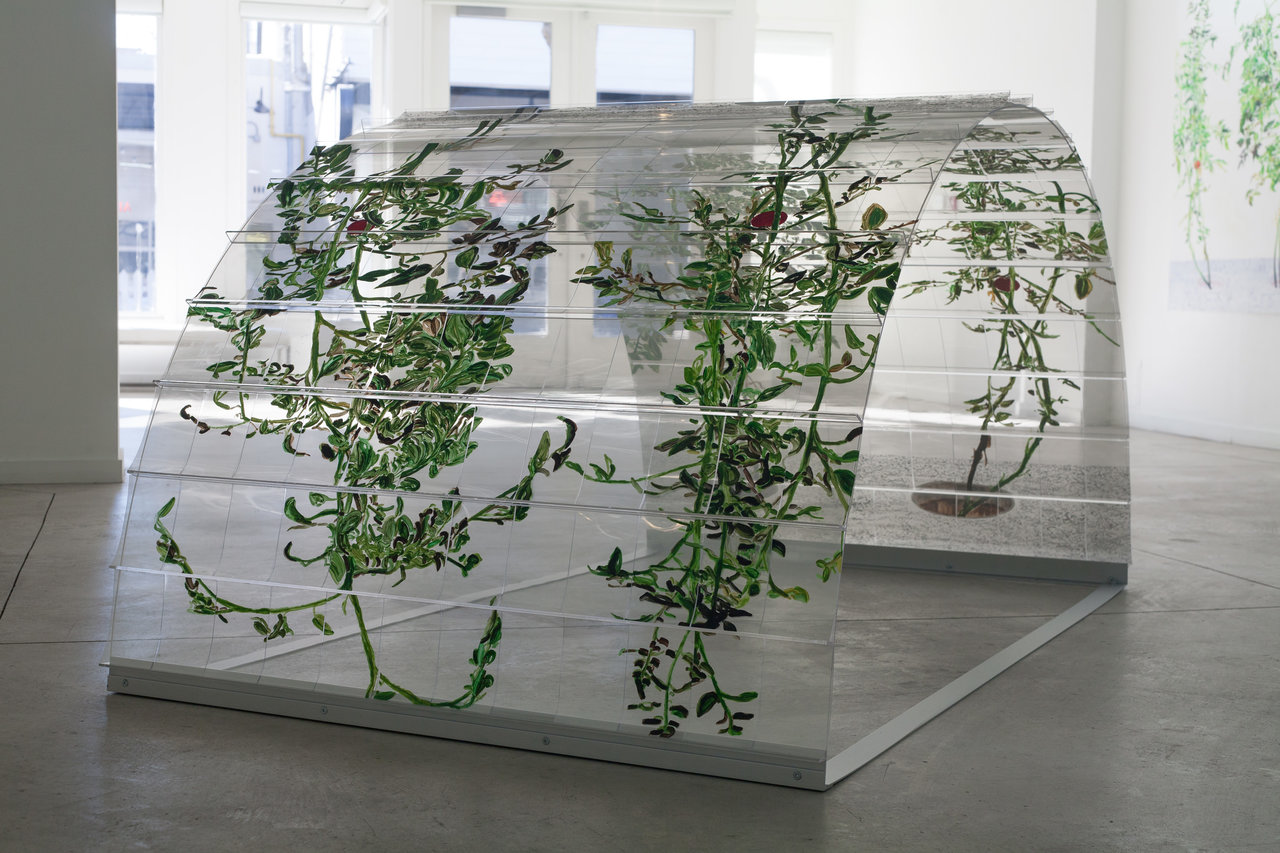 Alex Fischer, 6000 (arch) (sheets 1-240), 2015 (alternate view). Courtesy of O’Born Contemporary
Alex Fischer, 6000 (arch) (sheets 1-240), 2015 (alternate view). Courtesy of O’Born Contemporary
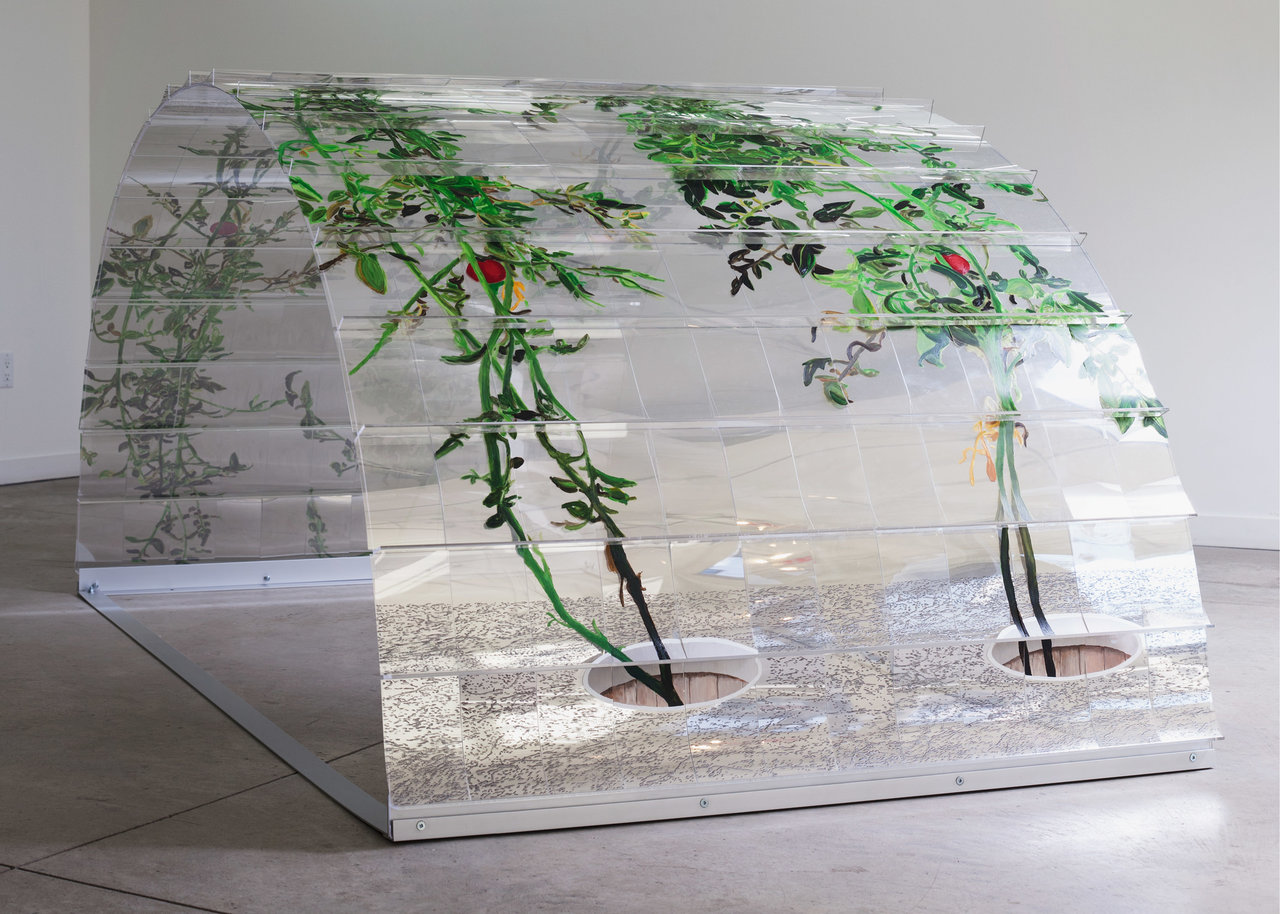 Alex Fischer, 6000 (arch) (sheets 1-240), 2015. Courtesy of O’Born Contemporary
Alex Fischer, 6000 (arch) (sheets 1-240), 2015. Courtesy of O’Born Contemporary
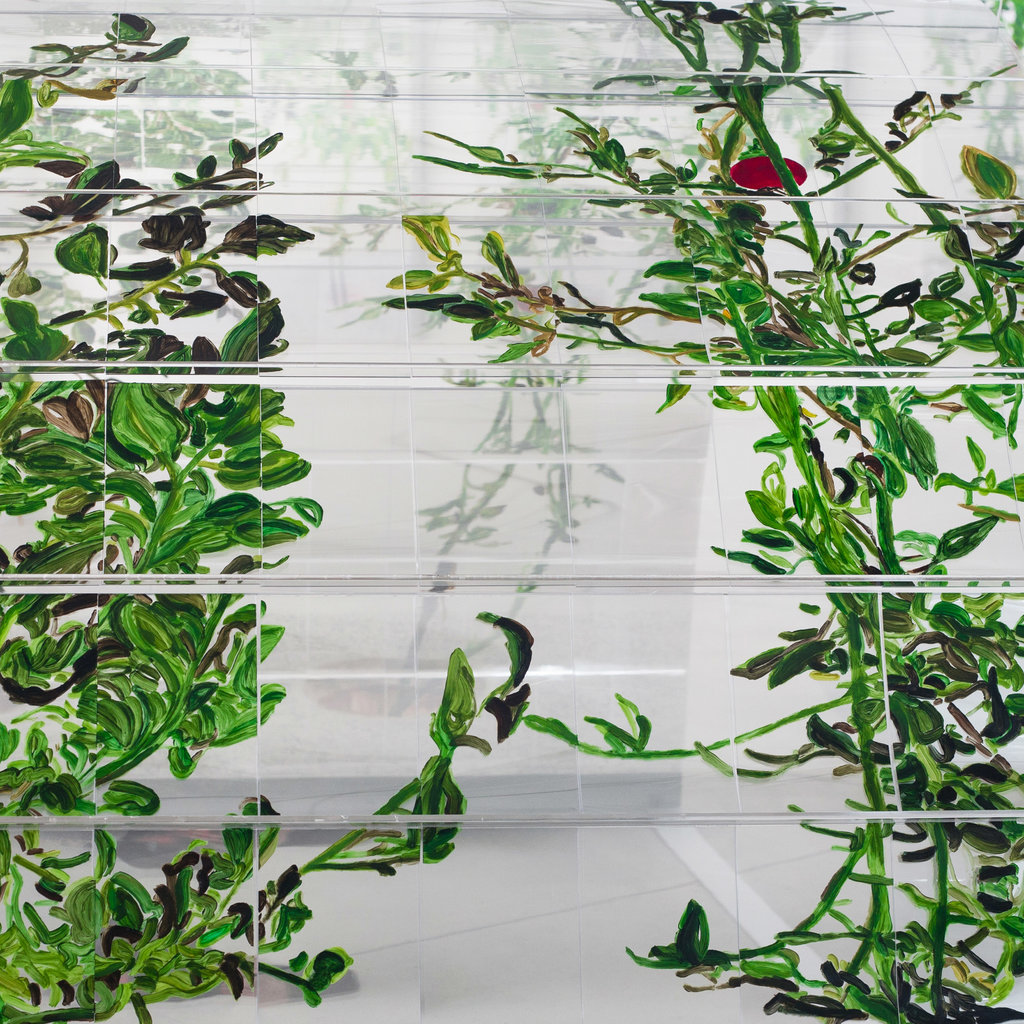 Alex Fisher, 6000 (arch) detail, 2015. Courtesy of O’Born Contemporary
Alex Fisher, 6000 (arch) detail, 2015. Courtesy of O’Born Contemporary
“VII (6000)” is the only piece in this show that has the clearest evidence of the artist’s hand. It is also the most accessible piece. Fischer reverses the time saving process of printing art on demand, and decides to become the tool itself, that produces on demand.
Tetyana Herych
*Exhibition information: February 27 – April 24, 2015, O’Born Contemporary at 131 Ossington Ave. Gallery Hours: Tuesday – Saturday, 11 – 6 p.m.
